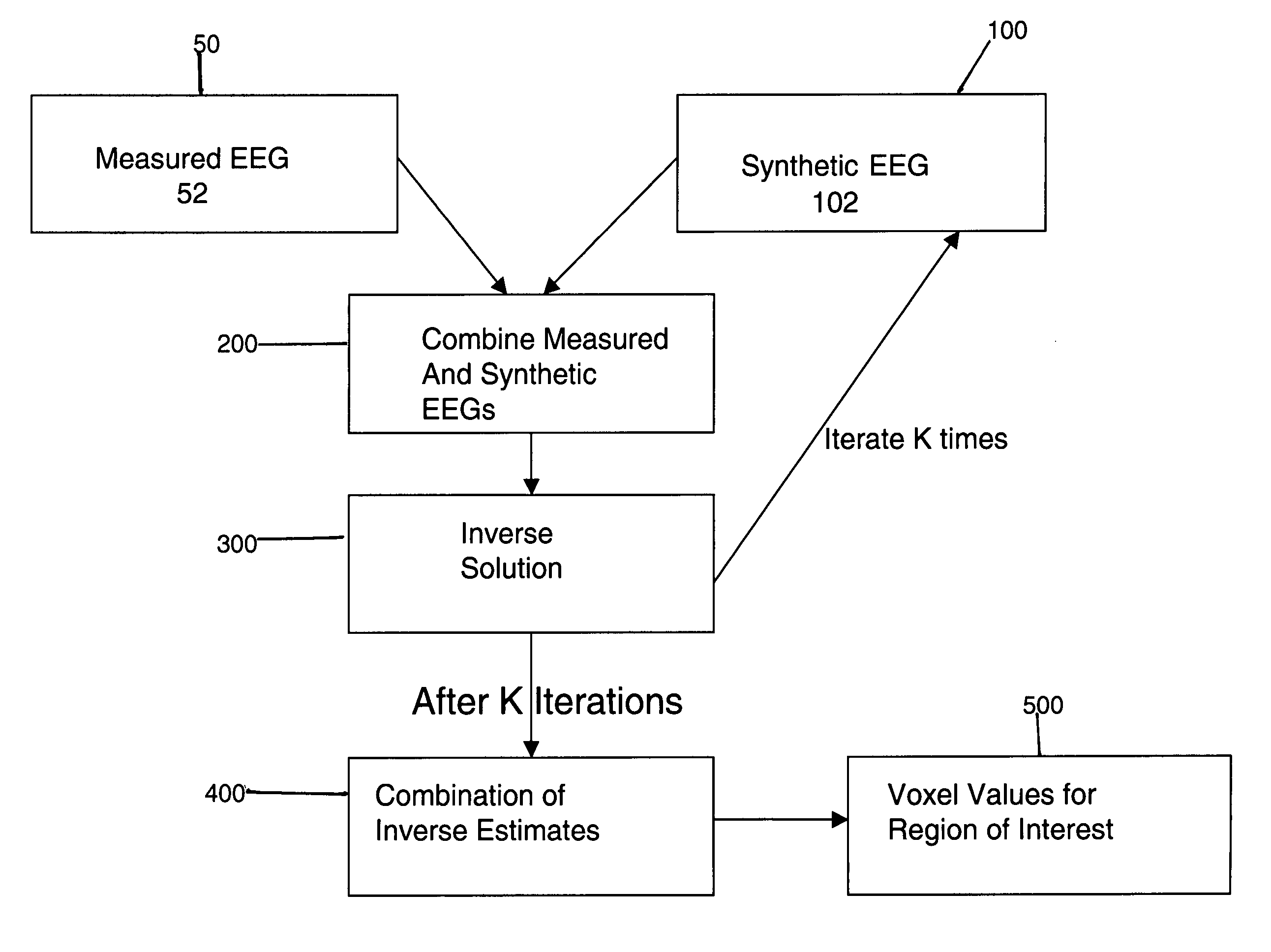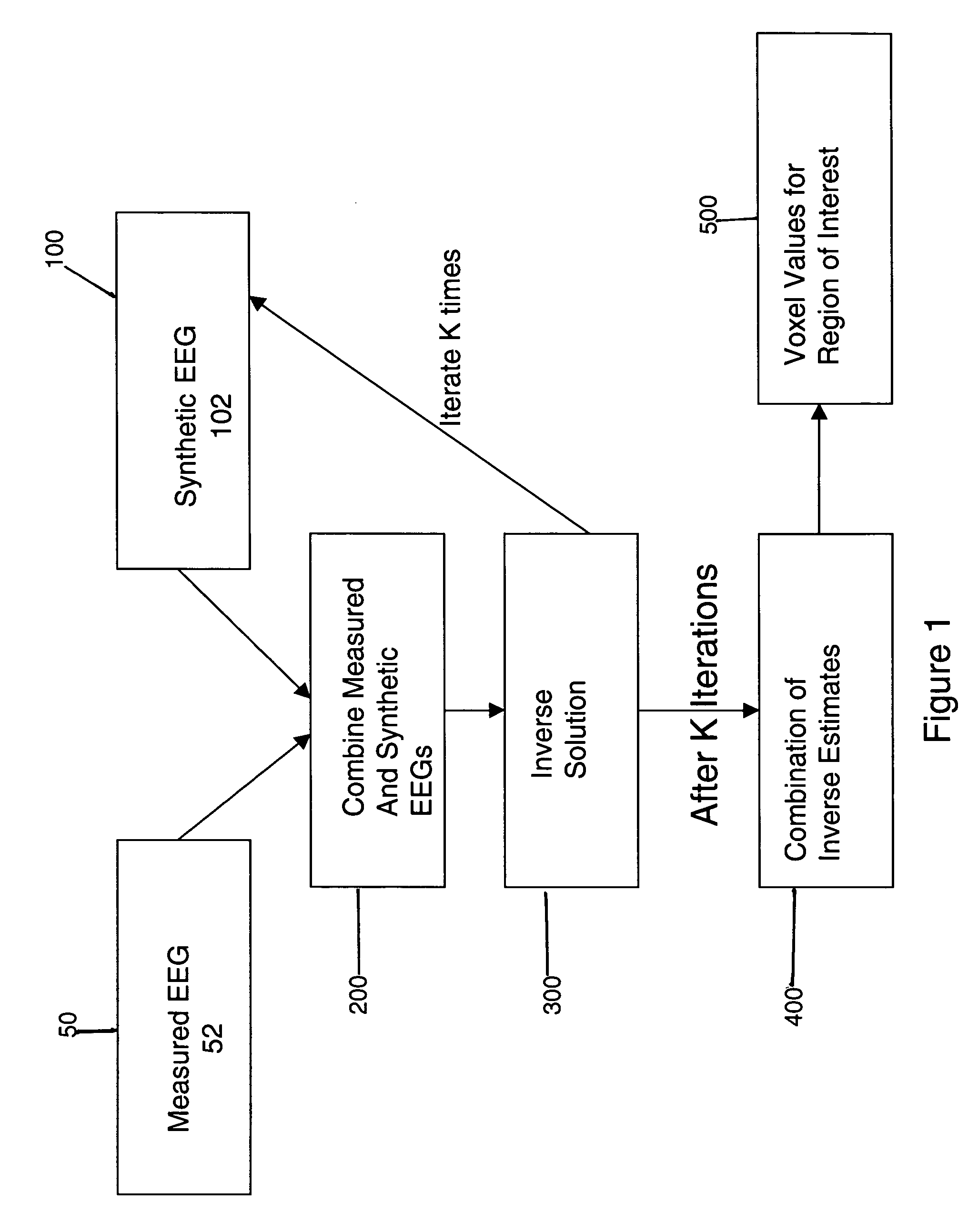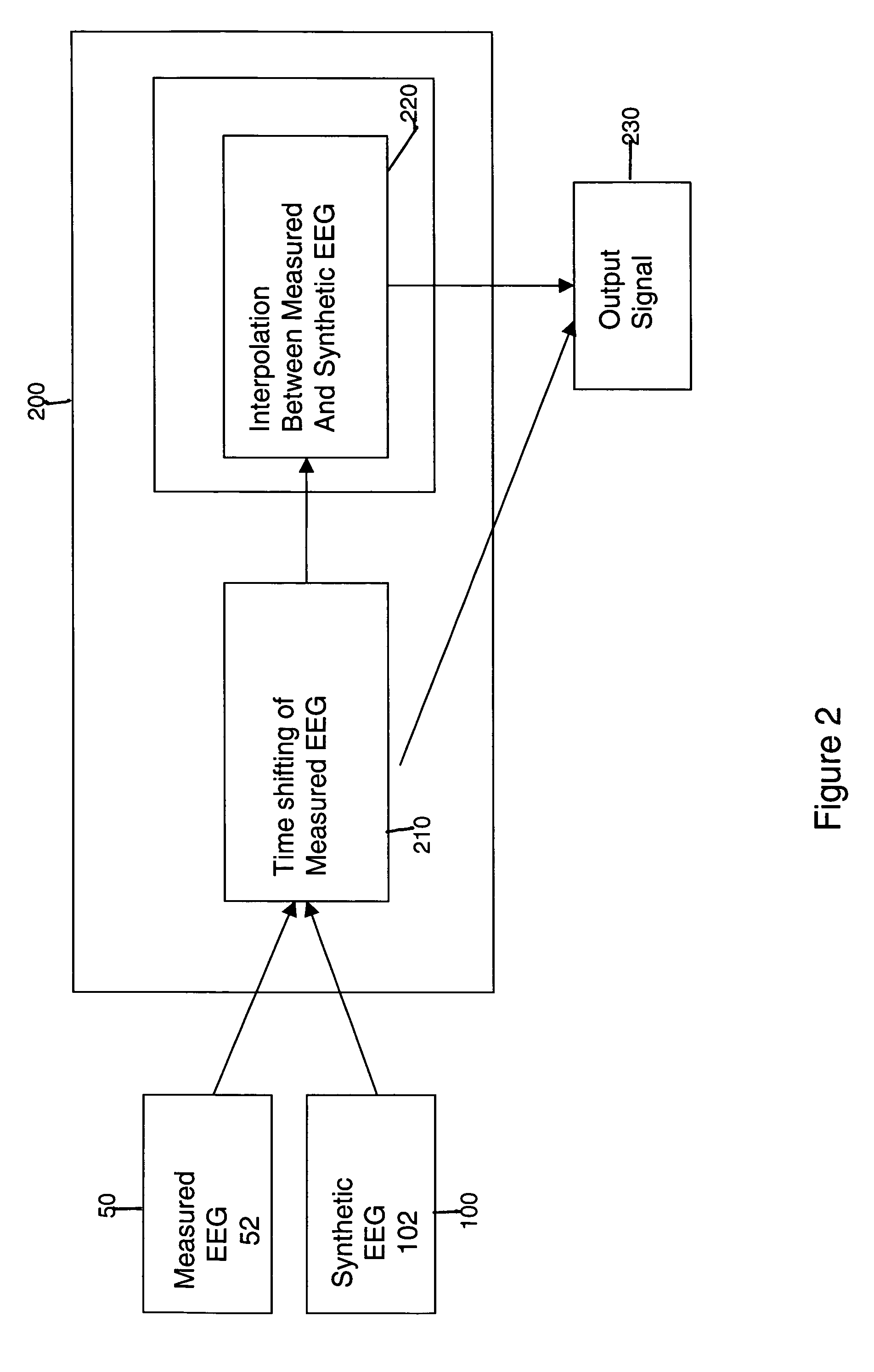System and method for EEG imaging of cerebral activity using small electrode sets
a technology of cerebral activity and imaging system, which is applied in the field of system and method for eeg imaging of cerebral activity using small electrode sets, can solve the problems of poor spatial detail in the resultant image, impractical full-head electrode montages in many clinical settings, and inability to meet the needs of patients,
- Summary
- Abstract
- Description
- Claims
- Application Information
AI Technical Summary
Benefits of technology
Problems solved by technology
Method used
Image
Examples
Embodiment Construction
[0012]The method of the present invention is shown in FIG. 1. The method estimates cerebral sources of electrical activity for a set of N input channels of EEG data utilizing Inverse Methods well known in the art. The N input channels consist of M channels of acquired (measured) EEG data augmented with synthetic EEG data for the remaining (N−M) channels, where M[0013]1. Acquiring M channels of EEG data representative of cerebral activity of a patient in step 50. The measured EEG signals are acquired by means of one or more EEG electrodes and amplifiers or other known EEG processing components, to produce a channel of measured EEG data;[0014]2. Creating K sets of N−M channels of synthetic EEG data in step 100 corresponding to the “missing” channels;[0015]3. Combining the M measured channels with the K sets of N−M synthetic EEG channels in step 200;[0016]4. For each combination of measured channels and one of the K sets of synthetic data, calculating the inverse solution using an Inve...
PUM
 Login to View More
Login to View More Abstract
Description
Claims
Application Information
 Login to View More
Login to View More - R&D
- Intellectual Property
- Life Sciences
- Materials
- Tech Scout
- Unparalleled Data Quality
- Higher Quality Content
- 60% Fewer Hallucinations
Browse by: Latest US Patents, China's latest patents, Technical Efficacy Thesaurus, Application Domain, Technology Topic, Popular Technical Reports.
© 2025 PatSnap. All rights reserved.Legal|Privacy policy|Modern Slavery Act Transparency Statement|Sitemap|About US| Contact US: help@patsnap.com



